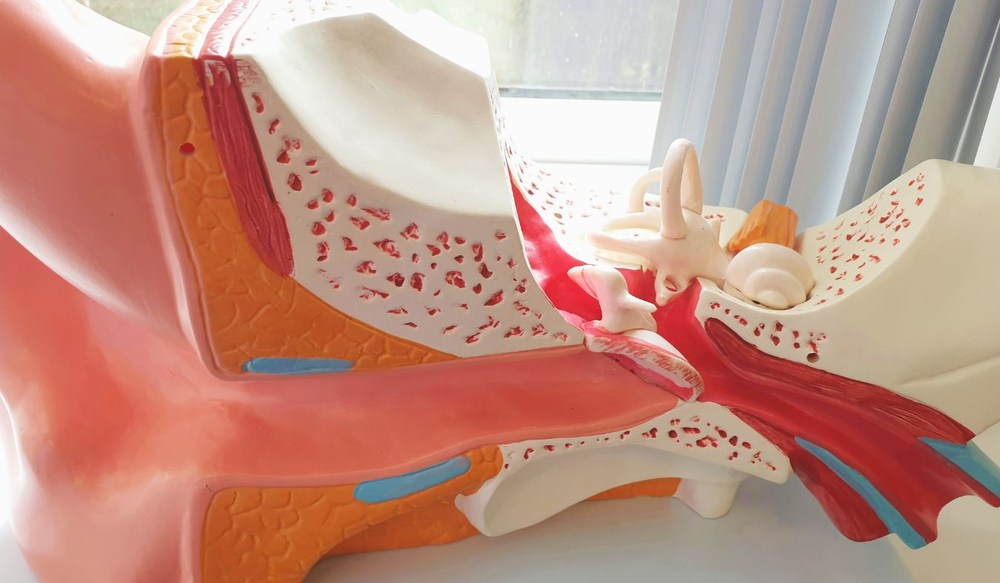How to Choose the Best Hearing Aid for Your Lifestyle
Choosing the right hearing aid isn’t just about finding something

By: admin | June 24, 2024
Hearing loss can sometimes make social situations a bit tricky. With around 48 million Americans experiencing some degree of hearing loss, it’s not uncommon to find social interactions a bit challenging. The subtle nuances of communication like body language, facial expressions and tone can often be missed in the effort to hear words clearly.
But, this doesn’t mean that meaningful interactions are out of reach. There are strategies that can help you interpret social cues better, even with hearing loss. By focusing on non-verbal signals and using context clues effectively, you can improve your ability to communicate and connect with others.
Hearing loss can subtly change the way you interact with others. It’s not just about struggling to hear words, but also about missing out on the subtleties of conversation like tone and pitch. This can lead to misunderstandings and feelings of isolation.
But don’t worry, there are ways to overcome these obstacles! Here are a few tips:
Non-verbal cues play a key role in our daily interactions and can often carry more weight than spoken words. Understanding non-verbal signals such as facial expressions, body language and gestures can greatly enhance your ability to interact effectively with others. For instance, a smile or a nod can convey agreement or pleasure, while crossed arms might indicate discomfort or disagreement. Paying attention to these cues can help you gauge the mood of a conversation and respond appropriately. It’s also beneficial to maintain eye contact during conversations as it promotes engagement and shows that you are actively participating in the discussion. So next time you find yourself in a social situation, keep these tips in mind: observe carefully, maintain eye contact and respond to non-verbal cues – these simple strategies could make all the difference!
Understanding body language can enhance your interactions. Body language is a powerful tool that can provide insights into people’s thoughts and feelings.
Being able to interpret body language effectively can be a game-changer in social situations. It can help you pick up on unspoken cues and respond appropriately, making conversations smoother and more meaningful. For example, if someone is leaning in while talking to you, they are likely interested in the conversation and want to engage more deeply. On the other hand, if they are leaning back or looking away, they might be disinterested or uncomfortable.
Using body language effectively can also help you express yourself better. Subtle gestures like nodding in agreement or maintaining eye contact can show that you are actively engaged in the conversation. So understanding and using body language effectively is not just about interpreting others’ signals but also about expressing your own thoughts and feelings more clearly.
Facial expressions often speak volumes, providing clues about a person’s feelings and intentions. Understanding facial expressions can significantly enhance your social interactions. A frown or a furrowed brow might indicate confusion or disagreement, while wide eyes could signal surprise or fear. By paying close attention to these silent cues, you can better comprehend the unspoken elements of a conversation and respond in a more informed manner.
Eye contact is not just about maintaining a connection during a conversation. It’s a tool that can help you pick up on non-verbal signals and understand the dynamics of social interactions better.
Eye contact can provide valuable insights into a person’s thoughts and emotions. For instance, if someone maintains steady eye contact, it often indicates that they are interested and engaged in the conversation. On the other hand, frequent blinking or looking away might suggest discomfort or nervousness.
Using eye contact effectively can also enhance your own communication skills. By maintaining eye contact when you speak, you convey confidence and sincerity, making your words more impactful. So next time you’re in a conversation, use this powerful tool to decipher social cues and improve your interactions!
Context clues can be an invaluable tool in your communication toolkit, especially when you’re dealing with hearing loss. These are hints or signals within a conversation that can help you make sense of what is being said, even if you miss a few words here and there. For example, if everyone around you starts putting on their coats, it’s likely that they are about to leave, even if you didn’t hear the exact conversation. Here are some tips on how to use context clues:
Tone and volume play a key role in our conversations. These two elements are essential in conveying emotions and intentions, making them essential for meaningful interactions.
Tone refers to the emotional quality or mood of the voice, while volume is about how loud or soft the voice is. Both can significantly impact how your message is received by others. For instance, a high-pitched, loud voice might indicate excitement or anger, while a low-pitched, soft voice could suggest calmness or sadness.
Effective communication is not just about what is said but also how it’s said. By paying attention to tone and volume, you can enhance your understanding of conversations and make your interactions more meaningful.
Reading social cues with hearing loss can indeed be a hurdle. However, it’s a challenge that can be effectively addressed with the right strategies. For instance, if you find yourself struggling to comprehend the mood of a conversation due to changes in tone or volume, try focusing more on the speaker’s facial expressions and body language. These visual cues can provide valuable insights into their emotional state and help you respond appropriately. With practice and patience, you can enhance your ability to read social cues despite hearing loss, making your interactions smoother and more fulfilling.
If your hearing loss is impacting the way you interact on a day-to-day basis, there are several forms of technology available to help you better communicate, including hearing aids. Hearing aids come in a variety of different styles to meet your individual needs, including: in the ear (ITE), behind the ear (BTE) and in the canal (ITC). Within each of these styles, there are further refinements to provide each individual with a customizable experience.
Just as a pair of glasses can bring the world into focus for those with vision issues, assistive listening devices (ALDs) can amplify the sounds around you, making it easier to participate in conversations and enjoy your favorite activities. These devices are like a personal volume control, allowing you to turn up the sounds you want to hear.
ALDs come in various forms, from personal amplifiers to FM systems. They work by reducing background noise and enhancing speech clarity, much like turning up the volume on your TV while muting the surrounding noise. With these tools at your disposal, hearing loss doesn’t have to limit your communication or dampen your social interactions.
Confidence is key when it comes to effective communication and engaging interactions. Here are a few strategies:
Did you know that the World Health Organization recommends adults to have their hearing tested at least once every three years? Regular testing is important because untreated hearing loss can lead to social isolation and cognitive decline.
Regular hearing check-ups play a vital role in maintaining your communication skills and overall quality of life. They are an essential part of managing your hearing health and ensuring that you continue to enjoy meaningful interactions with those around you.
Taking charge of your social life despite hearing loss is not just possible, it’s empowering. It’s about transforming challenges into opportunities for growth and connection.
This begins with a shift in perspective. Instead of viewing hearing loss as a barrier, see it as an opportunity to develop new skills and deepen your understanding of communication. You have the power to shape your social experiences and create meaningful connections, even with hearing loss. The key lies in being proactive, staying positive and using the right strategies and tools at your disposal. You’re not alone on this path – there are countless resources available to support you along the way.
Understanding social cues with hearing loss may seem challenging, but it’s not an insurmountable hurdle. With the right strategies and tools, you can handle social situations effectively and enjoy meaningful interactions. At Baker Audiology & Hearing Aids, we are committed to helping you on this journey. Our team of audiologists is ready to provide guidance and solutions tailored to your unique needs.
If you’re in Sioux Falls, SD or nearby areas and would like more information about how to better read social cues with hearing loss or explore our range of assistive listening devices, don’t hesitate to reach out. We invite you to contact us at (605) 610-3466 for a consultation. Together, we can work towards enhancing your communication skills and boosting your confidence in social situations despite hearing loss.
Tags: hearing loss and mental health, hearing loss symptoms, hearing loss testing

Choosing the right hearing aid isn’t just about finding something
By: admin | October 20, 2025

Hearing aids have quietly become some of the most advanced pieces of
By: admin | July 29, 2025

If you enjoy hiking, playing tennis, working in your garden or
By: admin | June 20, 2025
